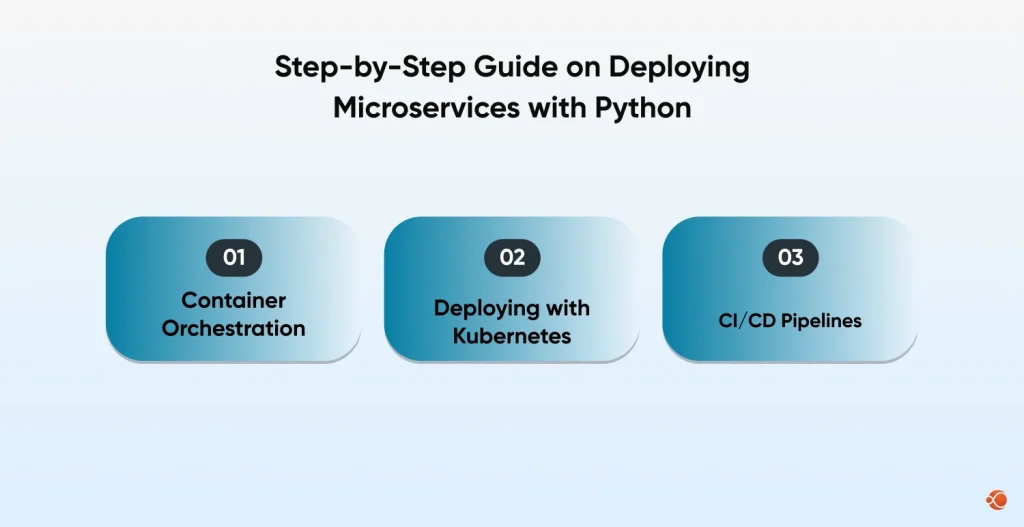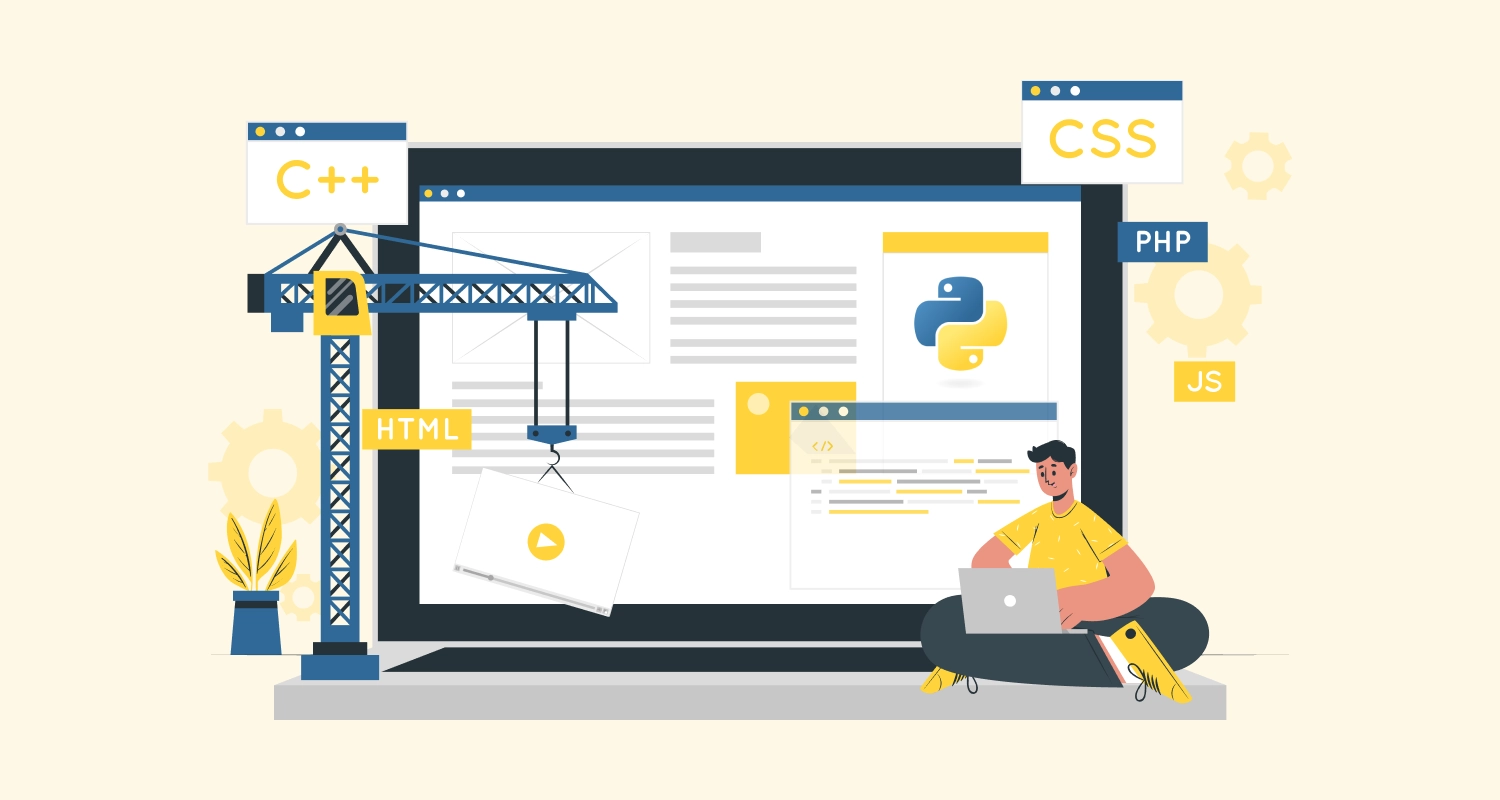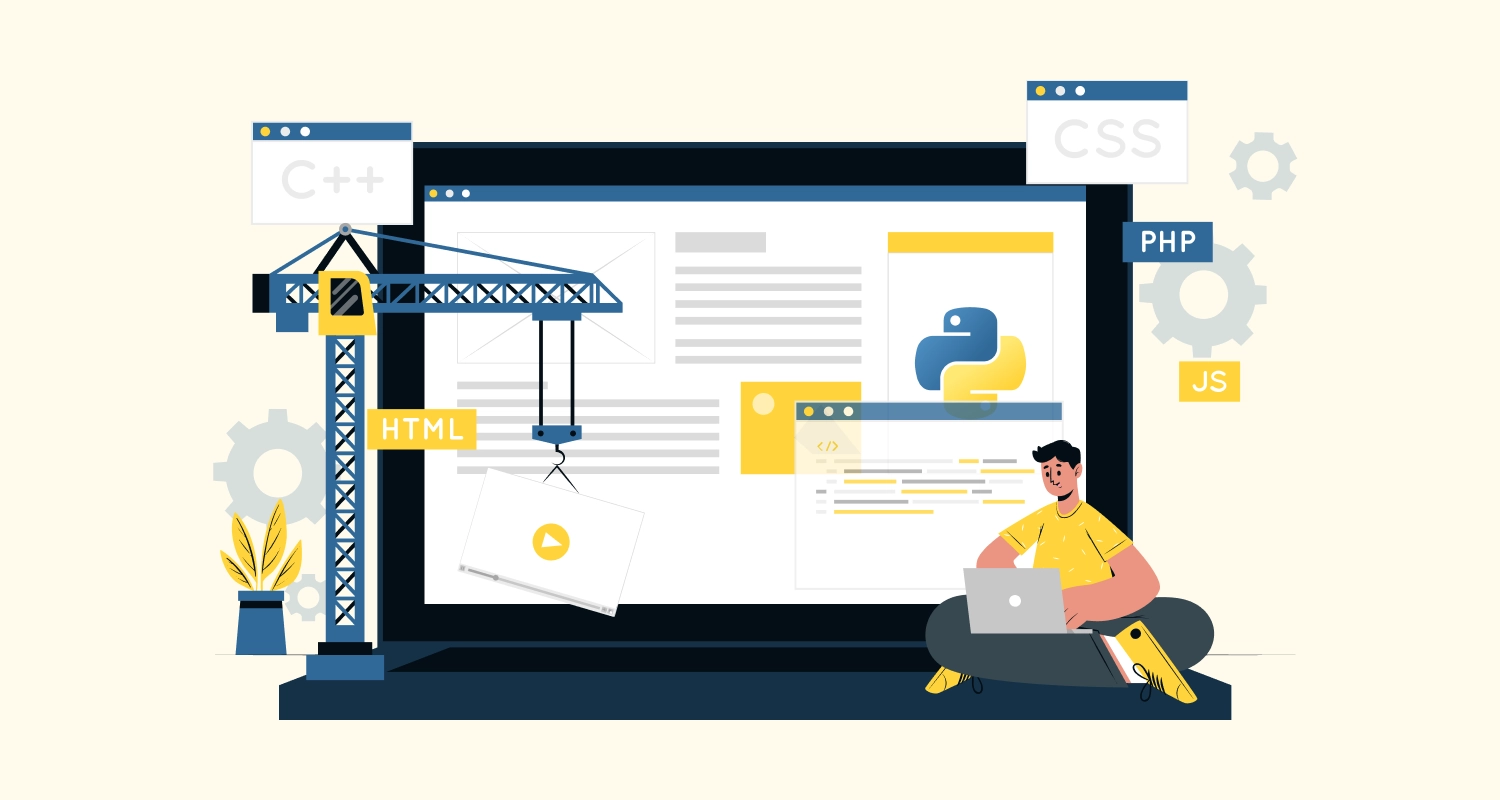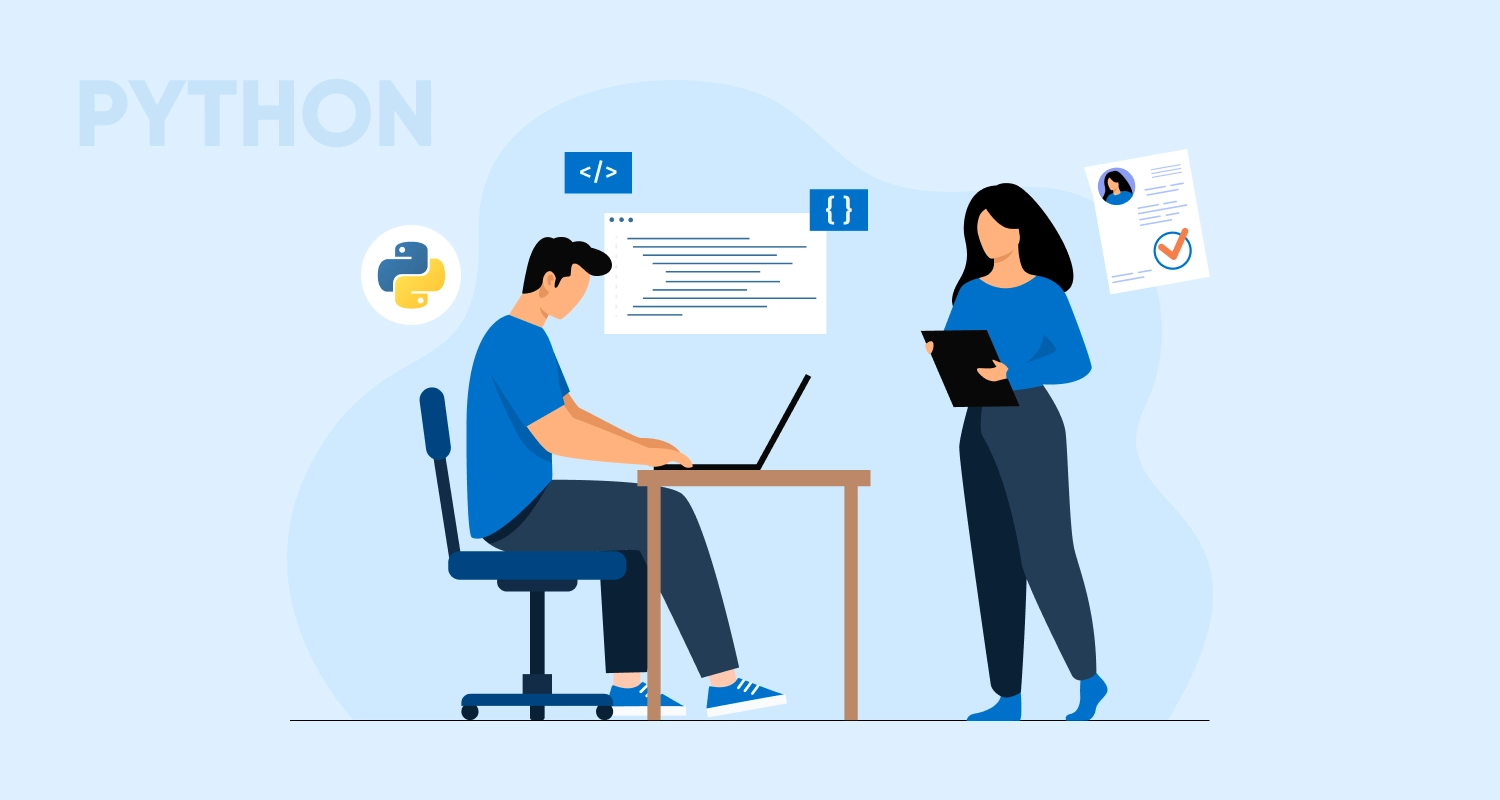Quick Summary: Microservices with Python break down applications into smaller, independent services to make it easier to build, scale, and manage. This blog covers architecture, frameworks, containerization with Docker, deployment, security, and best practices to help teams move from concept to production-ready systems.
The approach to application development by developers has undergone a significant change over the last decade. We are no longer tied to large monolithic applications, and are giving way to microservices: small, standalone, independently deployable services that work together to form a larger system. Leading this transformation, we have Python, renowned for its simplicity, and yet an extensive library ecosystem.
In a 2023 survey by Gartner, 74% of organizations reported using microservices architecture, with an additional 23% planning to adopt it within the next six months.
Building microservices using Python offers numerous strategic advantages, and we will cover all the details on deploying microservice apps on Python, including setting up the architecture, containerization, and deployment. By the end of this guide, you will have a clear roadmap for moving from concept to production-ready services.
What Are Microservices?
Think of an application like a restaurant kitchen. In a traditional monolithic setup, the kitchen typically has only one professional chef, who is responsible for preparing every dish. If the chef becomes overwhelmed or makes a mistake, the entire operation would suffer and receive a bad reputation.
A microservices-based “kitchen,” on the other hand, will have a team of specialized chefs, each responsible for their specific dish. One chef can focus on appetizers, while another handles main courses, and a third could be responsible for desserts. Each chef works independently on their recipe, but their actions don’t affect the outcome of others. Together, they deliver a complete dining experience efficiently and reliably.
Hence, a microservice can be thought of as a giant application divided into small, independent services, led by different teams, each responsible for a single business function, creating a larger and much more manageable ecosystem.
Key Benefits of Implementing a Microservices-Based Architecture
- Scalability: Scale only the services that need more resources.
- Agility: Different teams can work on different services simultaneously.
- Resilience: A failure in one service doesn’t necessarily affect the entire system.
- Technology flexibility: Each service can be created using different languages or databases as needed.
Why Use Python for Microservices?
The next question you may still have in mind is, ‘Is Python a good language for microservices?’, and ‘What is the cost to hire a Python developer?’ There are many other languages known for implementing microservices well, such as Java, Go, Node.js, and many more.
- Simplicity and Readability: Faster development cycles and easier onboarding for teams.
- Frameworks: Tools such as Flask, Fast API, and Django REST framework help build RESTful microservices.
- Rich Ecosystem: Python has the richest libraries for data processing, AI, ML, and more, making it the most versatile programming language.
- Container-Friendly: Apps built on Python microservices are lightweight and can be easily packaged with Docker.
Understanding the Five Foundational Components of Microservices
| Component | Explanation |
| 1. Service Boundaries | Each microservice should have a clear, specific responsibility to avoid scope creep and complexity. This aligns with the Single Responsibility Principle (SRP), ensuring maintainability. |
| 2. Communication | Services communicate via synchronous (REST APIs) or asynchronous (Message Brokers like Kafka) methods. gRPC is a faster alternative for communication. |
| 3. Data Management | Each service should have its own private database to maintain independence. Different databases (e.g., PostgreSQL, MongoDB) can be chosen based on service needs. |
| 4. API Gateway | The API Gateway manages all external requests, handling security, rate limiting, and routing to appropriate services. Tools like Kong or NGINX are commonly used. |
| 5. Service Discovery | Service Discovery allows services to locate each other dynamically. Tools like Consul or Kubernetes DNS automate this process, ensuring smooth communication. |
How To Set Up Microservices with Python
1. Choosing the Best Framework to Build Microservices with Python
These are the top Python frameworks for web development, well-suited for building microservice applications. You can go ahead with either:
- Flask offers a lightweight, minimal, and flexible architecture, usually ideal for small-scale projects.
- FastAPI is a modern and high-performance framework that supports asynchronous operations and automatic API documentation.
- Django REST Framework: Feature-rich and robust, DRF is the best Python microservices framework for developing microservices APIs with Python and projects that need built-in authentication, serialization, and admin tools.
2. Building a Basic Python Microservice with FastAPI
Here is one of the Python app examples of how a simple User Service might look:
app = FastAPI()
@app.get("/users/{user_id}")
def get_user(user_id: int): return {"user_id": user_id, "name": "Alice"}3. Structuring the Microservices Project
It is important to hire dedicated Python developer with experience in building microservices with Python that follow a clean folder structure:
user_service/
├── app/
│ ├── main.py
│ ├── models.py
│ ├── routes.py
│ ├── services.py
├── requirements.txt
├── tests/
└── Dockerfile4. Adding Business Logic and Persistence
Connect to a database (e.g., PostgreSQL via SQLAlchemy):
from sqlalchemy import Column, Integer, String, create_engine, Base
class User(Base): __tablename__ = "users" id = Column(Integer, primary_key=True) name = Column(String) email = Column(String)This makes the service functional beyond a simple API.

Containerization with Docker for Python Microservices
Microservices and containers go hand in hand. Containers ensure each service runs in isolation with its dependencies.
1. Writing a Dockerfile
Example for our FastAPI service:
FROM python:3.10-slim
WORKDIR /app
COPY requirements.txt .
RUN pip install -r requirements.txt
COPY . .
CMD ["uvicorn", "app.main:app", "--host", "0.0.0.0", "--port", "8000"]2. Building and Running
docker build -t user-service .
docker run -d -p 8000:8000 user-serviceThe service is now containerized and can run anywhere Docker is available.
3. Using Docker Compose
For multiple services, Docker Compose helps manage them:
version: "3"
services: user-service: build: ./user_service ports: - "8000:8000" order-service: build: ./order_service ports: - "8001:8000"This allows you to spin up multiple services with one command:
docker-compose upStep-by-Step Guide on Deploying Microservices with Python

Once containerized, services need to be deployed and orchestrated in production.
1. Container Orchestration
- Kubernetes (K8s): The most popular choice, providing scaling, service discovery, and resilience.
- Docker Swarm: Simpler alternative for smaller setups.
- AWS ECS / EKS: Managed container services on the cloud.
2. Deploying with Kubernetes
Basic deployment manifest for a User Service:
apiVersion: apps/v1
kind: Deployment
metadata: name: user-service
spec: replicas: 3 selector: matchLabels: app: user-service template: metadata: labels: app: user-service spec: containers: - name: user-service image: user-service:latest ports: - containerPort: 8000Expose the service via a Kubernetes Service object:
apiVersion: v1
kind: Service
metadata: name: user-service
spec: type: LoadBalancer selector: app: user-service ports: - protocol: TCP port: 80 targetPort: 80003. CI/CD Pipelines
Deployment becomes smoother when combined with automation pipelines:
- CI/CD Tools: GitHub Actions, GitLab CI, Jenkins.
- Pipeline Steps: Build → Test → Containerize → Push to Registry → Deploy to Kubernetes.
Python Microservices: Observability and Monitoring
| Component | Description | Popular Tools |
| Logging | Centralized logs from all Python microservices for easier debugging and monitoring. | ELK Stack (Elasticsearch, Logstash, Kibana), Fluentd |
| Metrics | Tracks performance like request rates, latency, and errors to monitor service health. | Prometheus, Grafana |
| Tracing | Follows requests across services to detect slow points and failures. | Jaeger, Zipkin |
How to Secure Python Microservices Applications
When building Python with microservices, ensure that security is treated as a priority at every level. Authentication and authorization should be well-established, using standards such as JWT tokens and OAuth 2. Ensure that only trusted users have full access to these resources. You should also learn about secret management. Store sensitive API keys and database credentials with HashiCorp Vault or Kubernetes Secrets. Opt for a Python web development company that follows these best practices for optimizing Python networks, data protection, and addressing other security vulnerabilities.
Best Practices to Implement Microservices in Python
- Keep services small and focused; don’t overload a single service.
- Define clear API contracts with OpenAPI/Swagger.
- Automate testing and deployment to minimize human error.
- Utilize asynchronous frameworks (such as FastAPI and aiohttp) for high-performance services.
- Implement circuit breakers and retries to handle service failures in a graceful manner.
- Version your APIs to avoid breaking changes.
- Document services clearly for better collaboration.
The Future of Python Microservices Development
- Async everywhere: With frameworks like FastAPI, async will become the norm.
- Serverless + microservices: Combining FaaS (e.g., AWS Lambda) with microservices for greater flexibility.
- AI-powered operations: Tools that use AI to optimize deployments and monitoring.
- Edge microservices: Deploying microservices closer to end-users for reduced latency.
Why is CMARIX Your Ideal Python Web Development Company?
We have extensive expertise in designing and building Python-based microservices that are scalable, resilient, and production-ready. With a team of dedicated Python developers experienced in frameworks such as FastAPI, Flask, and Django REST, CMARIX ensures that each microservice is structured, maintainable, and aligned with business objectives.
Key Reasons to Partner with CMARIX:
- Proven Microservices Expertise: We have a dedicated team of over 240 developers, including many senior Python developers who have worked on numerous microservices projects across various industries. We can manage complex architectures, containerization, and your cloud deployment needs with ease.
- End-to-End Development: From defining service boundaries to CI/CD pipelines and Kubernetes deployment, CMARIX manages the complete lifecycle of Python microservices.
- Customized Solutions: CMARIX tailors solutions based on business requirements, selecting the best frameworks, databases, and tools for optimal performance.
- Security-First Approach: The team implements robust authentication, authorization, and secret management practices, which ensure all our Python microservices are secure and compliant.
- Cloud and DevOps Integration: Our dedicated Python developers are experienced in integrating microservices with cloud platforms (AWS, Azure, and GCP). We also provide container orchestration and automated deployment pipeline services, enabling faster go-to-market.
By choosing CMARIX as a Python web development company, businesses gain a long-term and reliable agency that can transform ideas into scalable, maintainable, and resilient microservices architectures, accelerating innovation and operational efficiency.
Final Words
Microservices with Python are a great choice for teams to build scalable, maintainable, and resilient systems. Right from designing Python microservice architecture to services using frameworks like FastAPI. This helps containerizing with Docker and deploying on Kubernetes; the microservices journey requires thoughtful planning, but it pays off with increased agility and performance.
FAQs on Building Microservices with Python
What are Microservices in Python?
A microservice is a tiny, independent service that handles just one business job. Python microservices use the simple, readable Python language to create these small, separate parts. They work together to build a larger application.
Is Python a Good Choice for Microservices?
Yes, Python is a great choice. It allows for very fast development because its code is easy to read and write. Plus, it has excellent, fast frameworks like FastAPI perfect for building quick APIs.
How to Build Microservices With Python?
You start by defining a single task for your service. Then, you write the code using a framework like Flask or FastAPI. Finally, you package that code into a Docker container for easy deployment.
Which Python Frameworks Are Best for Microservices Development?
The top frameworks are FastAPI for high speed and simple APIs, and Flask for lightweight, minimal services. Django REST Framework is also useful when you need built-in tools for databases and user management.
Can Python Microservices Work With Cloud Providers Like AWS, Azure, or GCP?
Absolutely. Because Python services are packaged in containers (like Docker), they are easy to deploy on any major cloud platform. Tools like Kubernetes on AWS, Azure, or GCP manage and scale them automatically.







